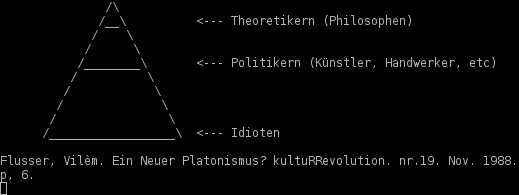14
07/15
19:16
postmedia 2: the condition
Second part.
- The postmedia Condition in the wake of Japan’s 3.11 Disaster by Takeshi Kadobayashi. Kansai University
Medium is understood as condition, not as technical support. There is a reinvention of old medium, a self-differenciality within a medium.
Today film is a postmedium because it does not rely on its material condition under the digital context. Film has always been in the postmedia condition. Since its media specificity on the support but on a set of technical support and the conventions of structure of film.
What if the McLuhan term media is already obsolete under digital conditions? then the postmedia condition will never be achieved.
Three symptoms:
- Jean Baudrillard. Media are not producers of socializations but of the opposite, of the implosion: Simulacra
- Paul Virilio. Mediation is about speed. Dromomobile.
- Friedrich Kittler. The digital erases the differences between individual media. Standardized, translations between media. The total algorithmic connection overrides the medium.
Under around the clock tv coverage, the amateur materials get into the mass media transmission. In postmedia there is fear to invisible threats.
Concluding remarks:
Petra Löffler
Lines of inquiry
What is a medium? Ontology
When, how, is a medium? History.
Postmedia means the dead of all media and the survival of the algorithmic media.
Has these conversations focused on the term? on philology? on the genealogy of the term? How can be the aesthetic condition today described?
Postmedia- amateur? Distributed aesthetics and the distribution of aesthetics.? Film and Cinema are different things. The linguistic turn is not enough to produce a genealogy but rather a cluster of situations.
The crisis in which people engage with mass media? stems from the production memory the creation of present.

